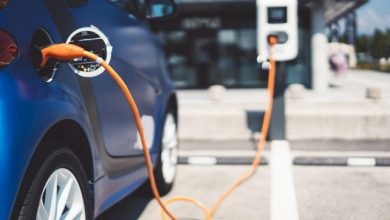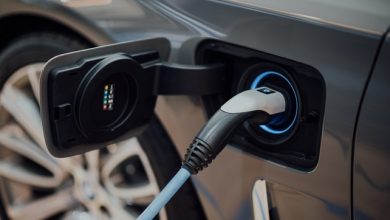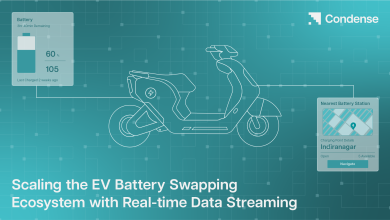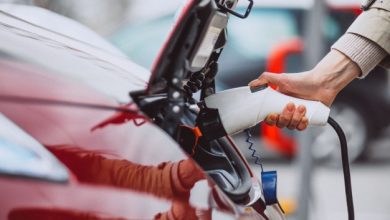Driving the future through Smart electric vehicles

Mobility – the movement of people and goods – is a fundamental human need and a key enabler of economic and social prosperity. After decades of relative stability, the mobility environment is undergoing a remarkable transformation with the advent of Fourth Industrial Revolution technologies, new business models and changing customers and shifting consumer preferences.
Electric Mobility is the most talked about subject the present time. The transportation industry, business and methods are preparing for major transformation in the next decades. As we read this statement, there are many initiatives getting high rocketed across the globe, industry and institutions.
Finally people are asking for ways to resolve one of the greatest challenges of our time: is there a replacement for our scarce petroleum resources? How can CO2 emissions be reduced? Can we lower the demand for energy? One approach is sustainable mobility.
E-mobility, therefore, replaces oil with renewable electricity. Thereby reducing fuel consumption, CO2 emissions and overall energy consumption. In specific figures, this means that, to cover the same distance, a car running on electricity requires only about one quarter of the energy of a combustion engine. So far, so visionary. The electric motor –we call it an e-drive – is already making full use of this potential: with immediately available torque for spontaneous response and high performance with the utmost level of efficiency. Now we have to focus on the strength of the battery so that cars running purely on electricity will be able to go much further.
Electric is one such disruption in the Automotive industry. The whole world is talking about “ACES” which translates to Autonomous , Connected , Electrified and shared Mobility.
The latest developments in ICT have a huge impact on the future mobility in terms of improving the efficiency and cost of transport to provide more convenience and comfort to passengers.
In this article we shall understand how the electric mobility along with the latest developments in IOT or Connectivity is going to change the way we commute in the days to come.
Connected electric – Present , future
Lets understand the connection between electric and IOT how the later will have an influence on the other and how these disruptions together will influence mobility.
Connectivity offers the following benefits in the automotive applications.
- In vehicle experience through high speed data connectivity
The users will have the highest level of connectivity and in vehicle entertainment system. The future vehicle will be an extension of your living room or office space which will completely help you stay active all the time.
- V2X communication to enable safe transport , advanced traffic alert , collision detection
In EV its not necessary its need to connect the component like Battery and the Vehicle control systems basically predict the SOC and SOH of the battery and assess when the vehicle goes out of power also automatically identify the nearest charging station so that you would not go out of the vehicle range or refuel. In addition preventive maintenance is another key benefit of connected vehicles
- Autonomous driving and fully automated transport solution
Driverless vehicles have already been tested in many parts of the world and the same has huge potential to automate not only in people movement but also in manufacturing and service industries.
- Reduce range anxiety by locating charging points
Cloud connected vehicle and charging stations can interact with each other to make sure the vehicle has enough charge to take you to the destination without any problem
- Optimization of Battery utilization through cloud connected SOC and SOH monitoring and control
- Bring down the cost of transportation by shared mobility through cloud connected vehicles
- Preventive maintenance of vehicles and component service by continuously monitoring and data analytics through cloud
- Flashing over the Air (FOTA) to update the advanced vehicle functions as the future vehicle is mostly software driven.
Already many companies across the globe started working on bringing these technologies into automotive application to make the transport more cleaner, safer and convenient.
As the 5G is becoming more mainstream we will have more advanced applications that can be thought about around electric vehicles. Such transformation is possible as the vehicle is run by electricity which is more economical and power system inside the vehicle and the advancement in connectivity
Driving with Data
Data is the new Oil. Future mobility will be driven more by data. To understand this we need to understand the current issues in transportation. They are namely,
- Limited real estate for transport:
As cities are crowded with the population moving more towards the cities the real estate available for expansion or accommodate the increase in transportation becomes a huge challenge. This will have a huge impact not only on the social aspects also with huge economical impacts. We need to develop solutions to meet the demand for mobility. When we develop such solutions the data becomes primarily important to optimize the utilization of the resources.
- Crowded cities are prone to parking
Another major challenge the growing population in the cities face is the availability of parking space for the ever increasing vehicle. Shared mobility is the solution to solve the issue. The services in the likes of OLA , UBER will have a tremendous role to play in this situation. These are technology driven companies that use data as a primary source to provide their services. And the amount of data they have already accumulated will become the primary driver for efficient transport solutions.
- Aging infrastructure
The overall transportation infrastructure all over the world has the potential to go out of life and we need to rebuild the whole system. Also when we make such new system future proof, we should make them connected in the cloud for the continuous monitoring and updating of the system.
- Increasing logistic need
The effect of globalisation, materialization and online market , the need for an efficient logistic management system is increasing. We need to find ways and methods to handle the huge amount of such data. We might need to make use of technologies like Big data and AI to handle the whole situation.
Seamless integration of mobility
There are many initiatives across the developed nation to optimize the cost of transportation. Today we are spending about a Dollar (1$/KM) roughly as an average transportation cost per kilometer. We have a solution to optimize to bring down the cost so that there can be huge economical benefit and opportunity for growth. Think about a situation by which your day today business transport, and leisure travel and good movement across the globe all happens integrating all the different mode of transportation by the click of the button and its available at your doorstep as and when you demand without any time delay , is it not amazing. And if it’s going to be at standard cost then that’s what we are talking about. Of course this can be achieved by means of electric and connected mobility. This makes everything possible.
Circular economy and opportunity
After we had a huge hit on life and business due to COVID 19 , the industry started reviving. It’s also interesting so check out how the business works with the transition to electric and connected vehicles. Even more interesting is that with electricity if we can make use of renewable forms of energy it becomes 100% carbon neutral. Along with this we shall also making use of the vehicle as energy storage and we can power the utilities though the vehicle. Also I am seeing more possibility to create micro grids with hybridization of energy harvesting and the energy can be used for charging and the charged up vehicle would become moving energy storage. This would be an ideal situation of circular economy and effective resource utilization
Summary
As discussed, electric , connected , automated and integrated shared mobility is the future. According the prime minister of India Mr. Narendra Modi, the future mobility can be described in the 7C Model. That is COMMON, CONNECTED, CONVENIENT,CONGESTION FREE, CHARGED, CLEAN MOBILITY POWERED BY CLEAN ENERGY and CUTTING EDGE. As we are moving forward towards sustainable mobility as described above , we need to make sure we shall work collaboratively, collectively, creating world class solutions with world class engineering capabilities. We shall leave pollution free , accident free and driver free transportation systems for the next generation to give them a good life along with safety and comfort.
Author:
Manikandan P. Thought leader and expert in Electric Mobility Technology and future mobility Solutions
Seasoned professional with more than 20 years of experience in Automotive Industry and last 12 years in E-Mobility components, Systems and Solutions Development
Participated in many events, conferences and Technology forums in future mobility Solutions in actively contributed to the development. He is currently leading the electric powertrain development at OLA electric and he is the president of Society for Smart electric mobility (SSEM) a non profit organization focusing on smart and electric mobility in India.
Published in Telematics Wire





